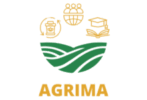The winemaking industry generates significant by-products, such as grape stalks, which pose environmental challenges [1]. Rich in polyphenols with recognized health benefits, these by-products offer potential for sustainable applications [2].
his study investigates grape stalks from Tinta Miúda variety as a source of bioactive polyphenols for functional food use. Solid–liquid extraction (SLE) was optimized by evaluating ethanol concentration, temperature, mass-to-solvent ratio, stirring speed, and time.
A two-level fractional factorial design (2⁵⁻¹) identified key variables, followed by optimization using response surface methodology (RSM) through a central composite design (CCD). To benchmark SLE against other sustainable methods, three green extraction techniques—ultrasound-assisted extraction (UAE, 10 and 20 min), microwave-assisted extraction (MAE, 40 and 60 °C), and subcritical water extraction (SWE, 120 and 150 °C)—were applied to stalks from red and white grape varieties. Extraction performance was assessed using total phenolic content (TPC), ABTS radical scavenging activity, and ferric reducing antioxidant power (FRAP).
TPC analysis indicated that temperature and biomass-to-solvent ratio were the most influential SLE factors. RSM allows for identifying optimal conditions (60◦C, 1:150 w/v, 75 min, 44% ethanol, 250 rpm). Among green techniques, UAE (20 inutesm at 70% amplitude) yields the highest TPC and antioxidant activity (TPC: 78.9 mg GAE/g dw; ABTS: 123.5 mg AAE/g dw; FRAP: 106.2 mg AAE/g dw). These findings support the sustainable valorization of grape stalks through green extraction, promoting their integration into functional food systems. Ongoing work focuses on incorporating these extracts
into food matrices to assess their bioactivity and functional potential.
References
[1] C. Ferreira, et al. (2023). Molecules, 28(22), 7538.
[2] E. Tapia, et al. (2024). Foods, 13 (12), 1795.
Mariana Gonçalves, Matisse Dewever, Cristina Soares, Cristina Delerue-Matos, Henri Nouws, Manuela M. Moreira; REQUIMTE/LAQV, Instituto Superior de Engenharia do Porto, Instituto Politécnico do Porto, Porto, Portugal
